(34336 products available)

























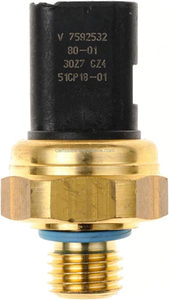








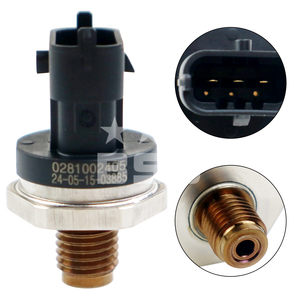













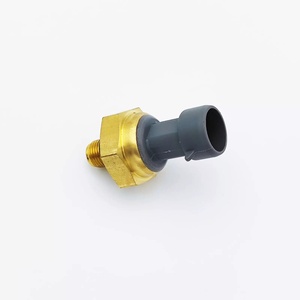










































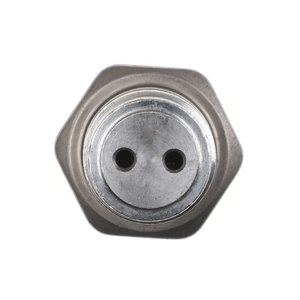








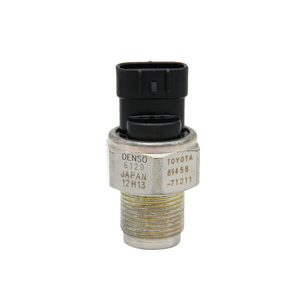
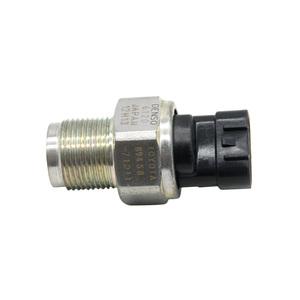






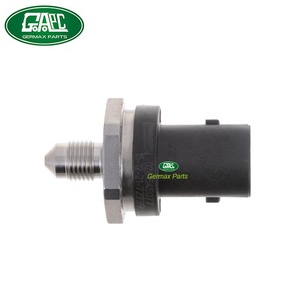


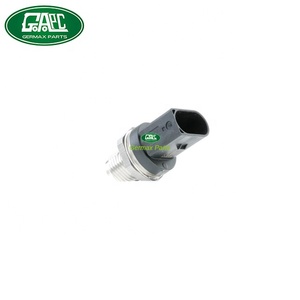



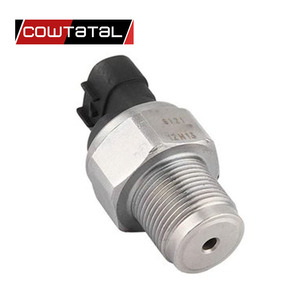


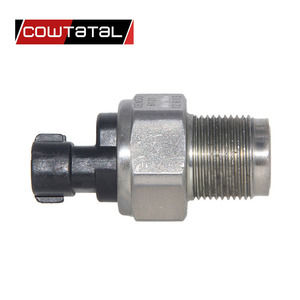

















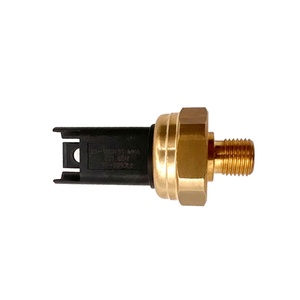



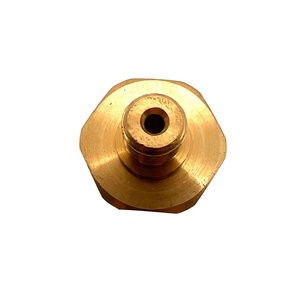















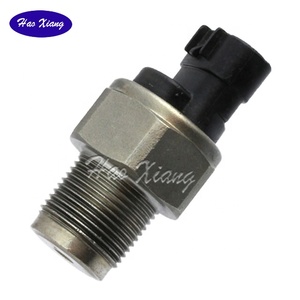
















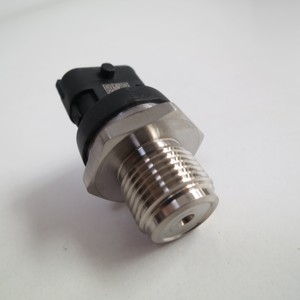














Fuel pressure sensors are being used in all modern vehicles. They are used to measure the pressure of the fuel that is being sent to the engine. The fuel pressure sensor provides accurate readings so that the engine control unit can maintain the right amount of fuel for the engine that is being used. The fuel pressure sensor also helps to adjust the fuel mixture, which helps the vehicle to run smoothly and efficiently. There are different types of fuel pressure sensors, and they all work differently.
Strain Gauge Fuel Pressure Sensors:
Strain gauge fuel pressure sensors are used in electronic fuel injection systems. They measure the change in resistance that is brought about by mechanical strain. Strain gauge fuel pressure sensors have high accuracy and stability. They also have complex circuits that make them more reliable in measuring fuel pressure.
Capacitive Fuel Pressure Sensors:
Capacitive fuel pressure sensors measure fuel pressure by determining the variation in capacitance between the sensor's diaphragm and the back wall. These sensors are sensitive to changes in pressure, which makes them suitable for precise pressure measurement. Capacitive fuel pressure sensors are also less affected by temperature changes, which makes them reliable.
Inductive Fuel Pressure Sensors:
Inductive fuel pressure sensors measure fuel pressure by determining the change in inductance in a coil as the diaphragm moves in response to pressure changes. They are known for their robustness and suitability for harsh environments. Inductive fuel pressure sensors are also less affected by temperature changes, which makes them reliable.
Piezoresistive Fuel Pressure Sensors:
Piezoresistive fuel pressure sensors are used to measure fuel pressure by using piezoresistive elements whose resistance changes when subjected to mechanical stress. They are highly sensitive and can detect even minor pressure variations. Piezoresistive fuel pressure sensors are also suitable for applications that require high sensitivity and precision.
Optical Fuel Pressure Sensors:
Optical fuel pressure sensors measure changes in light properties within the sensor element, which corresponds to fuel pressure variations. They offer excellent sensitivity and are immune to electromagnetic interference. Optical fuel pressure sensors are also suitable for applications where high precision and low noise levels are required.
Operating Voltage
The sensor requires an operating voltage to power its internal circuits. The operating voltage of a fuel pressure sensor is 5 volts. It is supplied by the engine control unit (ECU).
Pressure Range
Every sensor has a minimum and maximum pressure it can measure. The pressure range of a fuel pressure sensor is 0 to 300 kPa (0 to 43 psi). It is used to monitor the pressure of fuel rail systems in gasoline engines.
Output Signal
A fuel pressure sensor generates an output signal that is proportional to the pressure being measured. The output signal is sent to the ECU for monitoring and control purposes. The output signal of the sensor is an analog voltage signal that ranges from 0 to 5 volts.
Accuracy
The accuracy of a fuel pressure sensor is expressed as a percentage of full-scale value. The full-scale value is the maximum value of the sensor's pressure range. The accuracy of the sensor is ± 1% of full-scale value.
Response Time
The time it takes for the sensor to respond to a change in pressure is called response time. The response time of a fuel pressure sensor is 5 milliseconds.
Operating Temperature Range
Every sensor has a temperature range in which it can operate. The temperature range of a fuel pressure sensor is -40 to 125 degrees celsius (-40 to 257 degrees fahrenheit). This is important because it is used to measure fuel pressure in various engine conditions.
Materials
Fuel pressure sensors are commonly made of materials such as stainless steel, aluminum, and glass. These materials are chosen because of their resistance to corrosion and their ability to withstand harsh environments.
Electrical Connection
The electrical connection of a fuel pressure sensor is via a 3-pin connector. This is used to connect the sensor to the ECU. The pins are used to connect to the operating voltage, output signal, and ground.
Regular Inspection
Every fuel pressure sensor should be inspected and the electrical connections and wiring harness should be checked for damage, corrosion, or loose connections.
Cleaning
The electrical connections of the sensor should be cleaned with a suitable electrical contact cleaner. This is done to remove any corrosion or deposits that may affect the sensor's performance.
Replacement
If the sensor is faulty or out of specification, it should be replaced with a new one. When replacing a sensor, the old one should be removed from the engine and the new one should be installed. After being installed, the sensor should be calibrated to ensure accurate readings.
Software Updates
The ECU software should be checked for updates from the manufacturer. These updates may improve the fuel pressure sensor's performance and compatibility. The manufacturer's instructions should be followed when updating the ECU software.
Data Monitoring
The data from the fuel pressure sensor should be monitored using a scan tool. This is done to ensure that the sensor is working properly and that the fuel pressure is within specifications. If there are any abnormal readings from the sensor, further diagnostics should be performed to identify and fix the problem.
There are several factors to be considered when choosing a proper fuel pressure sensor. These include:
Consider the application's requirements
When selecting a fuel pressure sensor for any given application, the importance of understanding the requirements of that particular application cannot be overstated. Take into account factors such as the type of fuel being utilized, the kind of engine present in the vehicle, and the modifications that have been made to it, as well as the operating conditions that will be experienced. It is possible to ensure that a fuel pressure sensor is chosen that can accurately monitor fuel pressure under all circumstances by considering these factors. For example, in high-performance engines where fuel pressure must be maintained precisely, a sensor with high accuracy and fast response time would be essential.
Compatibility with the fuel system
Ensuring compatibility between the fuel pressure sensor and the fuel system is of utmost importance. This entails verifying that the sensor is constructed from materials that are resistant to corrosion and degradation, even when exposed to various fuels. Given their diverse compositions and characteristics, each type of fuel may present unique challenges in this regard. Furthermore, the pressure range of the sensor must align with the specifications of the fuel system to guarantee accurate measurements and optimal performance.
Accuracy and reliability
When choosing a fuel pressure sensor, it is crucial to take into account its accuracy and dependability. A sensor with high precision ensures that the fuel pressure remains within the specified limits, which in turn optimizes the performance of the engine and improves its efficiency. On the other hand, a reliable sensor consistently provides accurate measurements, even in challenging operating conditions or environments. To determine the accuracy and reliability of a fuel pressure sensor, it is advisable to review its specifications and performance ratings. Additionally, selecting a sensor from a reputable brand or manufacturer known for producing reliable sensors can provide added assurance.
Installation and integration
Considerations related to installation and integration can significantly influence the performance and functionality of fuel pressure sensors. It is essential to select a sensor that is easily installed and adjusted within the specified budget and timeframe. Additionally, the sensor's compatibility with other system components, such as the engine control unit (ECU), should be taken into account. This ensures seamless communication and integration, allowing for effective fuel pressure monitoring and control.
Durability and environmental considerations
When selecting a fuel pressure sensor, it is essential to consider its durability and environmental considerations. The sensor must be robust enough to withstand the harsh conditions commonly found in the automotive environment, such as high temperatures, vibrations, and exposure to various chemicals. Sensors designed with durability in mind can provide long-term and reliable performance, reducing the need for frequent replacements. Environmental factors play a pivotal role in determining the sensor's lifespan and effectiveness. For instance, sensors subjected to extreme temperatures or corrosive elements may deteriorate more rapidly if not appropriately addressed.
Before attempting any DIY, it is important to read the vehicle's service manual and understand the precautions that need to be taken. Here are some steps on how to replace a fuel pressure sensor:
1. Choose the right sensor: Make sure that the new sensor chosen for the replacement is compatible with the make and model of the vehicle.
2. Prepare the tools that are needed to get the job done. These may include wrenches, ratchets, sockets, screwdrivers, a fuel pressure gauge, and pliers. Also, have on hand shop towels, rags, and a container to catch any fuel that may spill during the process.
3. Start by relieving fuel pressure. This is an important step before disconnecting the fuel lines. Locate the fuel pump relay in the fuse box and start the engine. While the engine is running, remove the fuel pump relay and allow it to run for a few minutes before turning off the ignition. This will relieve the pressure in the fuel lines. The user can also consult the service manual for instructions on how to relieve fuel pressure.
4. Locate the fuel pressure sensor. Refer to the service manual to know the exact location of the sensor depending on the vehicle's make and model. It is usually found on the fuel rail or near the fuel lines.
5. Disconnect the electrical connector from the old sensor. Depending on the type of connector, it may be necessary to use a screwdriver or pliers to release a locking tab.
6. Use the appropriate tool to remove the old sensor from its mounting location. Be careful not to damage surrounding components or fuel lines.
7. Take the new sensor out of its packaging and compare it with the old one to make sure they match in shape and size.
8. Install the new sensor: Carefully install the new sensor into the mounting location and tighten it securely. Do not overtighten, as this can damage the sensor or surrounding components.
9. Reconnect the electrical connector to the new sensor, ensuring a secure fit.
10. Test the system: Start the engine and check for any fuel leaks around the sensor. If there are no leaks, use a fuel pressure gauge to verify that the new sensor is functioning correctly.
11. Once the new sensor has been tested, reinstall any covers or shields that were removed during the process. Dispose of the old sensor and any spilled fuel or debris following local regulations.
Q1: How often should a fuel pressure sensor be replaced?
A1: There is no set time for replacing fuel pressure sensors. They should be replaced when they start showing signs of damage or after conducting fuel pressure sensor tests.
Q2: Can one drive with a faulty fuel pressure sensor?
A2: It is not advisable to drive with a faulty fuel pressure sensor. It can damage other engine parts such as the catalytic converter, which is expensive to replace. The car may also drive poorly if the sensor is not functioning well.
Q3: Is it okay to use a second-hand fuel pressure sensor?
A3: Using a second-hand fuel pressure sensor is not recommended. It may have undetected damage that could affect its performance. Moreover, a used sensor may not last long, forcing one to replace it again soon.
Fuel pressure sensors have seen significant fluctuations in web search volume over the past year. The keyword averages 6600 monthly web searches, with a notable one-year increase of 83%. However, the three-month change shows a decrease of 18%, indicating recent volatility.
Analyzing the detailed monthly data, the web search volume for fuel pressure sensors peaked in August 2024 at 12,100 web searches, followed by a drop to 8,100 in September and a rise again to 9,900 in October. This pattern suggests a seasonal trend, with peaks typically in the late summer and early autumn months, followed by a gradual decline towards the end of the year.
The data reveals a complex trend with both upward and downward movements. The initial increase throughout the year could be attributed to growing consumer interest or market demand, possibly spurred by new vehicle models or technological advancements in automotive sensors. The subsequent decline in recent months might reflect a market saturation or a shift in consumer focus towards other automotive components. This analysis highlights the importance of monitoring market trends and consumer behavior to anticipate changes in web search volume for specific automotive parts like fuel pressure sensors.